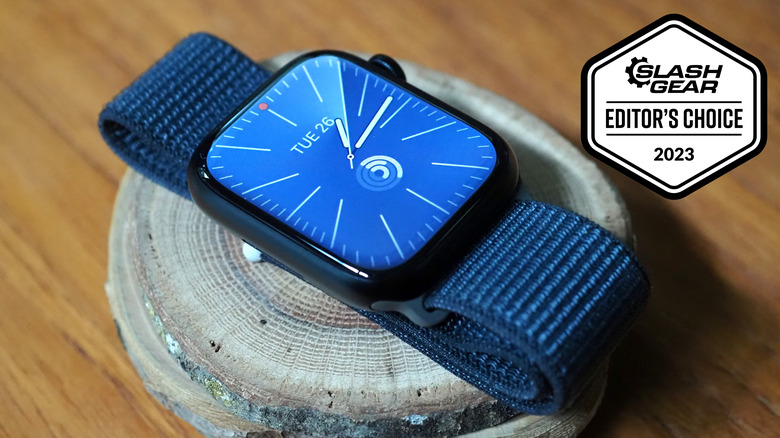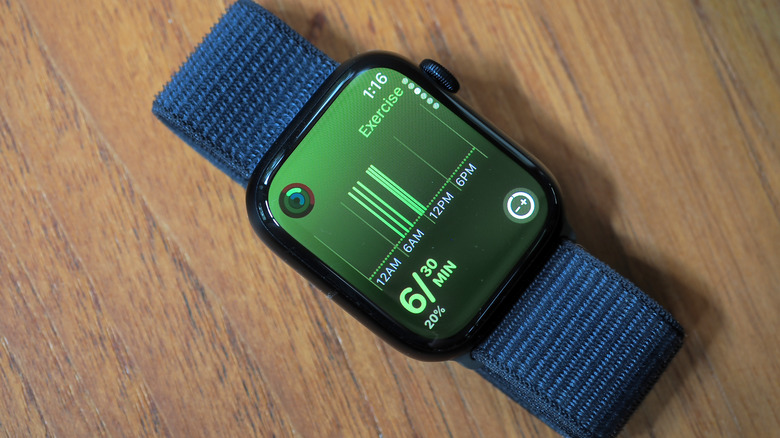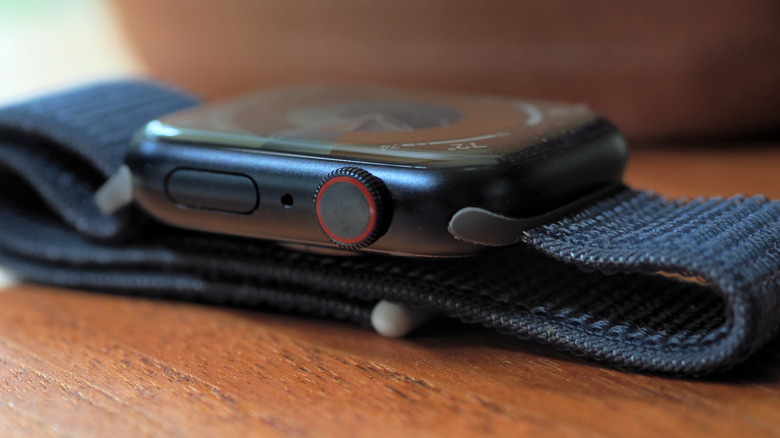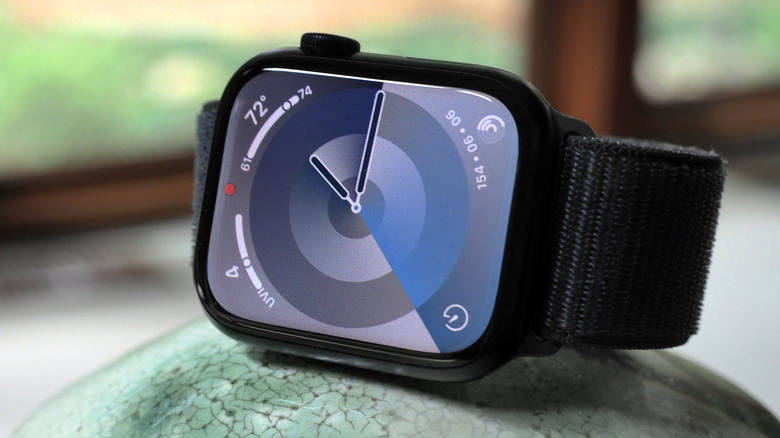Apple Watch Series 9 Review: Being The Benchmark Is A Blessing And A Curse
- The benchmark smartwatch gets better
- More processing power
- Excellent battery life
- Brighter display
- Double Tap could be a usability hit
- Some new features require a new iPhone, too
- Cellular is an expensive addition on aluminum watch
We may receive a commission on purchases made from links.
The Apple Watch Series 9 might make you question just how much you need a smartwatch to actually do. Now with more processing power, more standalone capabilities, and more environmental credibility, 2023's upgrade to Apple's computer-for-your-wrist manages to simultaneously be its best mainstream wearable yet, and a fairly iterative update to the Apple Watch that came before it. In a way, that leaves the purchase decision an even easier one to make.
At first glance, the physical changes are slight. Apple still offers two sizes — 41mm and 45mm — and two materials, with the most affordable Apple Watch Series 9 being aluminum, and the more expensive in stainless steel. Aluminum case models start at $399 in 41mm form and $429 in 45mm form and get an Ion-X front glass, versus sapphire crystal on the stainless steel watches, which start at $699 and $749, respectively; either way, the rear is ceramic and sapphire crystal. GPS+Cellular is a $100 option on the aluminum each version, and standard on the stainless steel.
Though unchanged in resolution, the displays on the Series 9 models get an important update to brightness. The headline figure is the new 2,000 nit maximum, double that of the Series 8, and making a big difference to outdoor visibility. Arguably more useful, though, is the new 1 nit minimum brightness, which allows the Apple Watch Series 9 to be even less distracting in Sleep Focus mode.
The other big improvement is the new S9 System in Package (SiP), the Apple Watch Series 9's "mechanism" in traditional watch terms. Faster and more power-frugal than the old S8, it promises smoother graphics and swifter apps. In practice, the improvements are mild, but the Apple Watch animations certainly are sleek and lag-free.
Apple provided an Apple Watch Series 9 for the purposes of this review.
watchOS 10 does a lot of the heavy lifting, here
The biggest change to usability doesn't actually come from the Apple Watch Series 9 hardware, as much as how watchOS 10 uses it. The newest OS version brings with it redesigns for most of Apple's own apps, typically adding more information to each screen so that they take full advantage of the display. However, it also changes the behavior of the physical controls and swipes, which can be a head-scratcher to longtime Watch wearers.
Turning the Digital Crown from a watch face now pulls up the new Smart Stack, a scrollable list of context-specific widgets. A single press of it brings up the app launcher, and a double-press the app switcher. The side button now summons the Control Center — rather than swiping up on the touchscreen — while a double-press opens your digital wallet.
WatchOS 10 looks great, and the revamped apps bring more useful information to the fore. All the same, despite having worn various generations of Apple Watch for years now, there's still a sense that it can be fairly clueless at times. If I always work out at the same time, just before I go to bed, you'd think watchOS would figure out it didn't need the "you can still close your rings!" nudge earlier in the evening.
Some of the new hardware powers features to streamline your interactions with the updated interface. Get within 13 feet of a recent Apple HomePod speaker, for example, and Smart Stack will prioritize media suggestions based on recently played music and podcasts. If the speaker is already playing, the Now Playing interface will automatically pop up on your wrist, too.
Siri can be swifter
It's all in the name of making Apple Watch interactions faster and simpler, and bringing Siri processing onboard is another meaningful example of that. Until now, Siri requests have been crunched in Apple's cloud, involving a round trip that sees audio sent to the servers and then the results transferred back to the Apple Watch. While that means Siri can tap plenty of processing power, it also adds lag and means that even simple requests are dependent on the smartwatch having an internet connection.
With the Apple Watch Series 9, the new S9 SiP is potent enough to do Siri processing on-device. Obviously, anything that requires external data — like pulling in a sports score, or triggering a Home routine — still involves an internet connection. For simpler tasks, though, including setting alarms, starting workouts, or telling Siri to record health information like weight and medication intake, the Apple Watch processes that entirely by itself.
Double tap has promise
Speaking to Siri has always been the easiest way to interact with the Apple Watch without actively touching its display or controls, but there are definitely times when chatting with Apple's assistant isn't ideal. The Apple Watch Series 9 introduces a new double tap feature, or more accurately it graduates functionality previously buried in watchOS' accessibility into a mainstream option (and one which is less demanding when it comes to power, important since Apple will enable double tap by default).
Apple can track your thumb and forefinger movement using the accelerometer, gyroscope, and optical heart sensor: pinch them together in a double tap motion, and the Apple Watch Series 9 will recognize that as a gesture (complete with an on-screen confirmation glyph). It defaults to the primary action for whatever is on the screen at the time: answering an incoming call; silencing a timer; or taking a photo with the Camera Remote app, for example. Or, from the watch face, double tap will open the Smart Stack.
In the Smart Stack, a subsequent double tap will step through each widget in turn. Elsewhere, though, there's no way to scroll through, say, a list of notifications or down through a message preview. Still, for quickly responding or reacting while your hands are otherwise full — assuming you can raise the wrist your Apple Watch is on, first — double tap should be a useful addition when Apple enables it in October.
Precision Finding is for forgetful early-adopters
As is often the case, using some of the latest Apple Watch features requires also using the latest iPhone model. In the case of Precision Finding, that's because both need to have the new second-generation Ultra Wideband chip, added to the Apple Watch Series 9 and the iPhone 15 family.
Misplace your iPhone, and the Apple Watch can now not only make it sound a noise remotely but give you distance and direction to its location. If you're the sort of person who feels physical pain at the idea of having their iPhone beyond arm's reach, this might not be all that useful, but for everyone else (including those with hearing issues, for whom the old system was likely a non-starter) the more granular directions will probably make for more happy reunions.
Sadly, at the moment this works only between Apple Watch Series 9 (and Apple Watch Ultra 2) and the iPhone 15 series of smartphones. Misplacing things like keys with AirTags attached, or an iPad, arguably seems more commonplace, but Apple Watch Precision Finding doesn't support them yet.
Excellent battery life, despite the hardware bump
Apple helped offset the brighter display on the Apple Watch Series 9 with greater frugality from the S9 SiP. The result is a claimed 18-hour battery life, just like the Series 8 before it, and up to 36 hours in Low Power Mode.
In practice, from putting the smartwatch on at 7 a.m., and taking it off at 11 p.m., with a full day of notifications and a workout, the battery was still reading over 50%. Obviously variations in what you're doing — making calls, say, or longer workout sessions with GPS tracking enabled — will have a bigger hit on power, but for most people well over an entire day's use shouldn't be an issue.
When it comes to recharging, it takes around 45 minutes to go from 0-80%. That final 80% is more time-consuming: figure on a full, flat to 100% charge taking about 1 hour 15 minutes. Apple supplies its puck-like charging cable in the box, but — as with iPhone — you'll need to supply your own USB-C charger.
Greener, though that's difficult to see
Apple's decision not to include a charger is, the company maintains, primarily an environmental one. The green angle is something the Apple Watch Series 9 leans into more generally: in addition to the case being made of 100% recycled aluminum (a switch made for the Series 5), the watch's battery uses 100% recycled cobalt.
You don't, of course, notice that yourself, but the changes in Apple's watch bands are more obvious. There's a new Sport Loop that's now carbon neutral and made from 82% recycled yarn, for instance, and it feels just as soft as the old version. A little more controversial is the decision to ditch leather bands altogether, replacing them with a FineWoven artificial suede-like material that uses 68% post-consumer recycled polyester.
Whether it's as premium-feeling a fabric as leather is down to personal taste. Still, you can swap on existing Apple Watch straps if you prefer, including third-party options.
Apple Watch Series 9 verdict
Those who already have a semi-recent Apple Watch on their wrist can probably be safely excused from this year's upgrade cycle. That's not to say features like a brighter (or dimmer) display, double tap, and onboard Siri processing aren't impressive, or nice to have. More that, with watchOS 10 being a free download for existing owners, Apple's older hardware is more than up to the job when it comes to setting the smartwatch benchmark.
For Apple Watch newbies, the argument to jump in gets stronger. More onboard processing power makes the Apple Watch Series 9 a better standalone device; the established health and workout tracking features — though for the most part unchanged in this generation — unlock a world of useful metrics. Personally, the Apple Watch has always been about making leaving my iPhone in my pocket more realistic, more of the time, and the Apple Watch Series 9 is the best so far at satisfying that requirement.
You'll find this particular version of the Apple Watch (with Midnight Aluminum and a Midnight Sport Loop) available at Best Buy for $529.99 if you want to pay all at once, or $14.73 per month for 36 months with an AT&T Installment Plan, or $14.72 per month for 36 months with a Verizon Device Payments plan.








